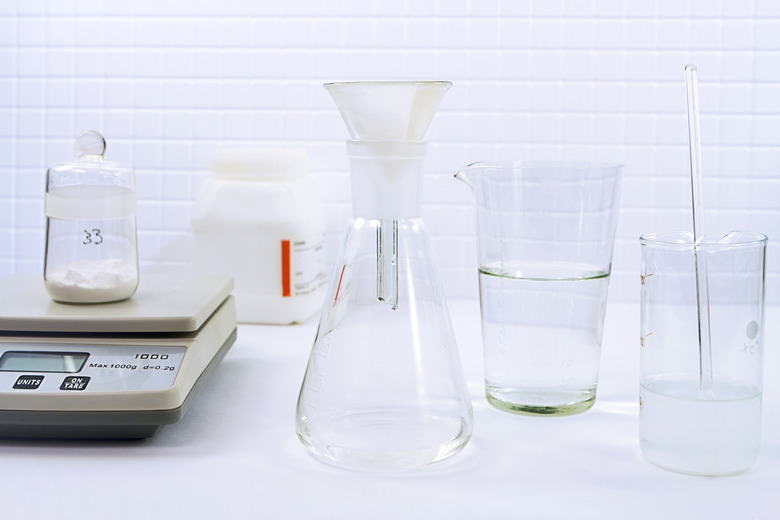How To Calculate Percent Solids By Weight
Water typically contains dissolved solids such as inorganic salts. The concentration quantitatively expresses the amount of a dissolved substance using a variety of units. The concentration by weight reflects the percent ratio of the mass of dissolved solids to the total mass of the solution. It allows you to characterize, for example, the water hardness or the fraction of solids in wastewater.
1. Add the Masses of the Dissolved Solids
Sum up the mass of all solids dissolved in the solution. For example, if the solution contains 5 grams of sodium chloride and 12 grams of potassium sulfate, the mass of the dissolved salts is 5 + 12 = 17 grams.
2. Add the Mass of Solids to the Mass of Water
Add the mass of solids to the mass of water to calculate the total weight of the solution. For instance, if those salts are dissolved in 150 grams of water, the total mass of the solution is 17 + 150 = 167 grams.
3. Divide by the Total Mass
Divide the mass of solids by the total mass of the solution, and then multiply the result by 100 to calculate the percentage of solids by weight. In this example, (17/167) * 100 = 10.18 percent.
Cite This Article
MLA
Fox, Oxana. "How To Calculate Percent Solids By Weight" sciencing.com, https://www.sciencing.com/calculate-percent-solids-weight-7519269/. 27 April 2018.
APA
Fox, Oxana. (2018, April 27). How To Calculate Percent Solids By Weight. sciencing.com. Retrieved from https://www.sciencing.com/calculate-percent-solids-weight-7519269/
Chicago
Fox, Oxana. How To Calculate Percent Solids By Weight last modified March 24, 2022. https://www.sciencing.com/calculate-percent-solids-weight-7519269/
